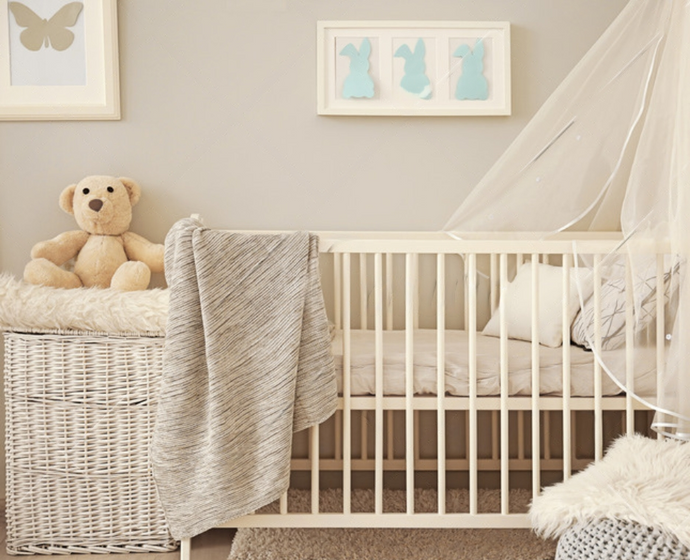Designing your toddler's room is a delightful endeavor that allows you to shape a nurturing and captivating haven where they can learn, play, and find solace. As parents, it's crucial to consider a multitude of factors that contribute to a well-rounded environment promoting both safety and holistic development. In this article, we will explore the essential considerations for decorating your toddler's room, with a particular emphasis on fostering a secure space that encourages exploration, sparks creativity, and cultivates their overall well-being. By attending to these key aspects, you can create a room that not only reflects your child's unique personality but also serves as a sanctuary where they can thrive and flourish during their early years.
-
Baby-Proofing and Safety
Ensuring the safety of your toddler is of utmost importance when designing their room. Begin by thoroughly baby-proofing the space to eliminate potential hazards and minimize accidents. Install safety gates at the top and bottom of stairs and secure them tightly to prevent access to these potentially dangerous areas. Anchor heavy furniture, such as dressers and bookshelves, to the wall using wall straps to prevent tipping incidents.
Cover electrical outlets with safety plugs or outlet covers to protect curious little fingers. Use corner guards on furniture with sharp edges and secure cords and blinds out of reach. Regularly inspect the room for any new potential safety concerns that may arise as your toddler grows and becomes more mobile. By taking these precautionary measures, you create a secure environment that allows your toddler to explore and play without compromising their safety.
-
Non-Toxic Materials and Health Considerations
Creating a safe and healthy environment for your toddler involves careful consideration of the materials and products used in their room. Opting for non-toxic materials not only protects their health but also provides peace of mind for parents. When selecting furniture, prioritize items made from natural, sustainable materials such as solid wood or bamboo, avoiding those treated with chemicals like formaldehyde. Look for paints and finishes that are labeled as low-VOC or VOC-free to minimize the emission of harmful chemicals into the air. Choose bedding and textiles made from organic fabrics that are free from pesticides, synthetic dyes, and flame retardants.
In addition to furniture and textiles, pay attention to the cleaning products and air fresheners you use in the room. Opt for non-toxic, eco-friendly cleaning solutions that are safe for children and avoid using aerosol sprays or products with strong fragrances that can irritate sensitive airways. Enhance indoor air quality by regularly opening windows to allow for fresh air circulation and consider investing in an air purifier to filter out pollutants and allergens.
By prioritizing non-toxic materials and considering the impact of products on indoor air quality, you create a healthier and safer space for your toddler to thrive. This proactive approach reduces their exposure to potentially harmful substances and supports their overall well-being from an early age.
-
Creating a Calming and Stimulating Atmosphere
The design of your toddler's room can greatly influence their mood, sleep patterns, and overall development. By creating a calming yet stimulating atmosphere, you can enhance their cognitive abilities, promote relaxation, and encourage creativity. Here are some key considerations to achieve this:
Color Palette - Choose a soothing color palette that promotes a sense of tranquility, such as soft pastels or neutral tones. These colors can help create a serene environment conducive to sleep and relaxation.
Lighting - Pay attention to the lighting in the room. Install adjustable blinds or curtains to control natural light during nap times and ensure the room is dark enough for restful sleep. Consider adding soft, warm lighting options like dimmable lamps or nightlights to create a cozy ambiance during bedtime routines.
Organized Space - A clutter-free and well-organized room can help reduce distractions and promote a sense of calm. Incorporate storage solutions like shelves, bins, and toy chests to keep toys, books, and other items neatly organized, fostering a peaceful and orderly environment.
Sensory Elements - Introduce sensory elements that stimulate your toddler's senses and imagination. Consider adding tactile elements like soft rugs or textured wall hangings. Include visually stimulating elements like age-appropriate artwork, wall decals, or mobiles to engage their visual senses.
Play and Learning Areas - Designate specific areas within the room for play and learning activities. Create a cozy reading nook with comfortable seating and a bookshelf filled with age-appropriate books. Set up an art corner with a small table and art supplies to encourage creativity. These dedicated spaces will inspire your toddler to explore, learn, and engage in various activities.
By carefully curating a calming and stimulating atmosphere, you can provide your toddler with an environment that supports their cognitive development, fosters relaxation, and encourages exploration and imagination. A well-designed room can become a sanctuary where your child feels safe, inspired, and ready to embark on new adventures.
-
Ventilation and Air Quality
Adequate ventilation and optimal air quality are vital considerations when designing your toddler's room. Proper airflow and fresh air circulation contribute to a healthier and more comfortable environment for your little one.
Start by ensuring that the room has good ventilation. Open windows regularly to allow fresh air to enter and stagnant air to escape. Fresh air not only provides a pleasant ambiance but also helps remove indoor pollutants and odors. Consider installing window screens or childproof locks to maintain safety while allowing for ventilation.
In addition to natural ventilation, you may want to consider using fans or air purifiers. Ceiling fans or portable fans can improve air circulation, preventing stuffiness and reducing the buildup of allergens. Air purifiers with HEPA filters can effectively remove dust, pollen, pet dander, and other airborne particles, promoting cleaner and healthier air.
Regular cleaning and maintenance of the room also play a significant role in maintaining air quality. Vacuum the floors and rugs frequently using a vacuum cleaner with a HEPA filter to capture dust and allergens effectively. Keep the room free from excess clutter and ensure that bedding and soft furnishings are cleaned regularly to minimize dust mites and allergens.
Lastly, be mindful of potential sources of indoor air pollution. Avoid smoking in or near the toddler's room, as secondhand smoke can have serious health consequences. Limit the use of aerosol sprays, strong cleaning chemicals, and synthetic fragrances, as they can release harmful chemicals into the air. Instead, opt for natural, non-toxic cleaning products and consider using natural air fresheners such as essential oil diffusers or indoor plants.
By prioritizing ventilation, air circulation, and air quality in your toddler's room, you create a fresher and healthier environment that supports their overall well-being. Fresh air and reduced exposure to indoor pollutants contribute to better sleep, enhanced respiratory health, and a more comfortable space for your little one to grow and thrive.
Designing a toddler's room involves much more than just aesthetics. It requires thoughtful consideration of safety measures, cognitive stimulation, furniture selection, and creating a peaceful sleep environment. By implementing the tips and suggestions provided in this article, you can create a safe, stimulating, and comforting haven for your child to thrive in. Remember, a well-designed toddler room is not only visually appealing but also contributes to their overall well-being and development.




